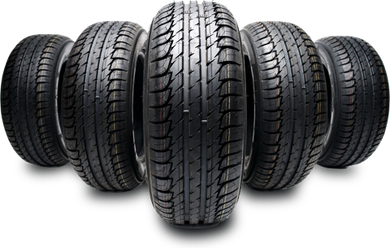Locate the Best Tires Morris IL: Comprehensive Choice Offered
Tire Service: Recognizing Tire Pressure Monitoring Equipments
Comprehending Tire Pressure Tracking Solutions (TPMS) is a critical facet of preserving ideal car performance and safety and security on the road. With innovations in vehicle innovation, TPMS has come to be a standard feature in modern-day cars, supplying real-time info on tire pressure degrees.

Significance of TPMS
The importance of Tire Stress Monitoring Equipments (TPMS) depends on their capacity to boost car safety and efficiency through real-time surveillance of tire pressure levels. Keeping the correct tire pressure is important for making certain optimum handling, stopping, and overall security of a car. TPMS provides vehicle drivers with prompt comments on any kind of overinflated or underinflated tires, permitting for timely changes to be made.
Components of TPMS
Making up different vital components, a Tire Stress Monitoring System (TPMS) operates as an advanced safety attribute in contemporary cars. The main components of a TPMS consist of sensors, a control component, and a warning indicator. Sensing units are normally situated in the tire valve stem or connected to the wheel assembly, where they gauge tire pressure and transfer data to the control module. The control module processes this information and causes a caution if it finds significantly low pressure in any of the tires. The warning indicator, commonly a symbol on the control panel, notifies the vehicle driver to inspect the damaged tire or tires. Some advanced TPMS versions also present the real tire pressure analyses for each tire, offering motorists with real-time info to guarantee optimal tire efficiency and security. By monitoring tire stress continually, TPMS assists prevent crashes, lowers tire wear, and improves fuel effectiveness, making it a vital component for automobile safety and security and efficiency.
Types of TPMS

On the other hand, indirect TPMS depends on the vehicle's wheel rate sensing units to monitor tire pressure. This system finds underinflation by comparing the rotational speeds of the wheels. Indirect TPMS is less expensive than direct TPMS, as it utilizes existing sensors within the vehicle.
While straight TPMS offers more exact readings, indirect TPMS is simpler in layout and generally calls for less maintenance. Both systems have their constraints and advantages, and the selection between them typically relies on factors such as price, car make, and personal choice. Comprehending the distinctions in between these 2 types my website of TPMS can help car owners make notified decisions pertaining to tire maintenance and safety.
TPMS Upkeep Tips
Conduct routine checks on the tire stress degrees and compare them with the TPMS analyses to ensure they are consistent. During tire rotation or substitute, make sure that the TPMS parts are dealt with very carefully to prevent any kind of potential damage. If the TPMS advising light illuminates on the control panel, attend to the problem immediately by examining the tire stress and the overall system for any kind of faults.
Advantages of Correct Tire Pressure
Maintaining correct tire stress, as stressed in TPMS Maintenance Tips, is vital for enjoying the countless benefits connected with optimum tire pressure degrees. One of the key benefits of maintaining the proper tire stress is improved fuel performance. When tires are correctly inflated, there is much less rolling resistance, causing far better fuel economy. Furthermore, correct tire stress makes sure also tire wear, prolonging the lifespan of the tires and advertising more secure driving conditions. With the right tire stress, cars likewise have much better handling and grip, specifically in unfavorable climate condition. This can enhance overall driving performance and safety and security for the chauffeur and travelers. In addition, preserving ideal tire pressure can add to a smoother and a lot more comfy ride by minimizing resonances and sound created by underinflated tires. In final thought, the advantages of appropriate tire pressure go past simply tire longevity; they encompass improved gas efficiency, improved safety, better lorry efficiency, and general driving comfort.
Final Thought
In verdict, comprehending tire stress tracking systems (TPMS) is essential for keeping optimum tire stress and making certain vehicle safety. By recognizing the relevance of TPMS, being acquainted with its elements, knowing the different types offered, click this link sticking to proper maintenance ideas, and recognizing the advantages of preserving correct tire stress, vehicle drivers can improve their driving experience and prolong the lifespan of their tires. Proper tire stress is essential to secure and efficient automobile operation.
